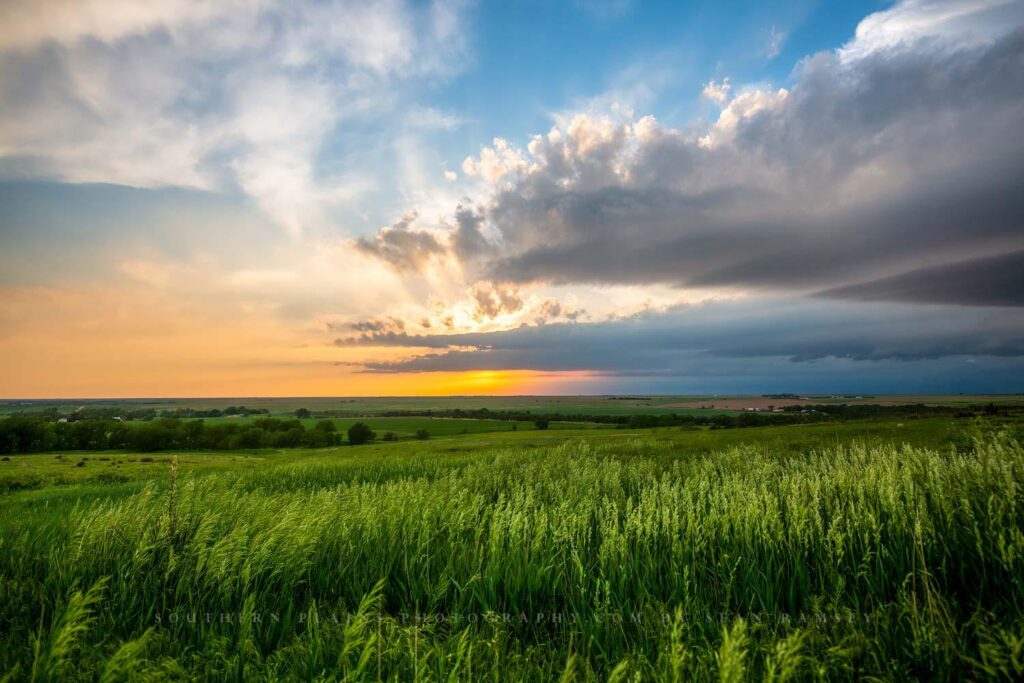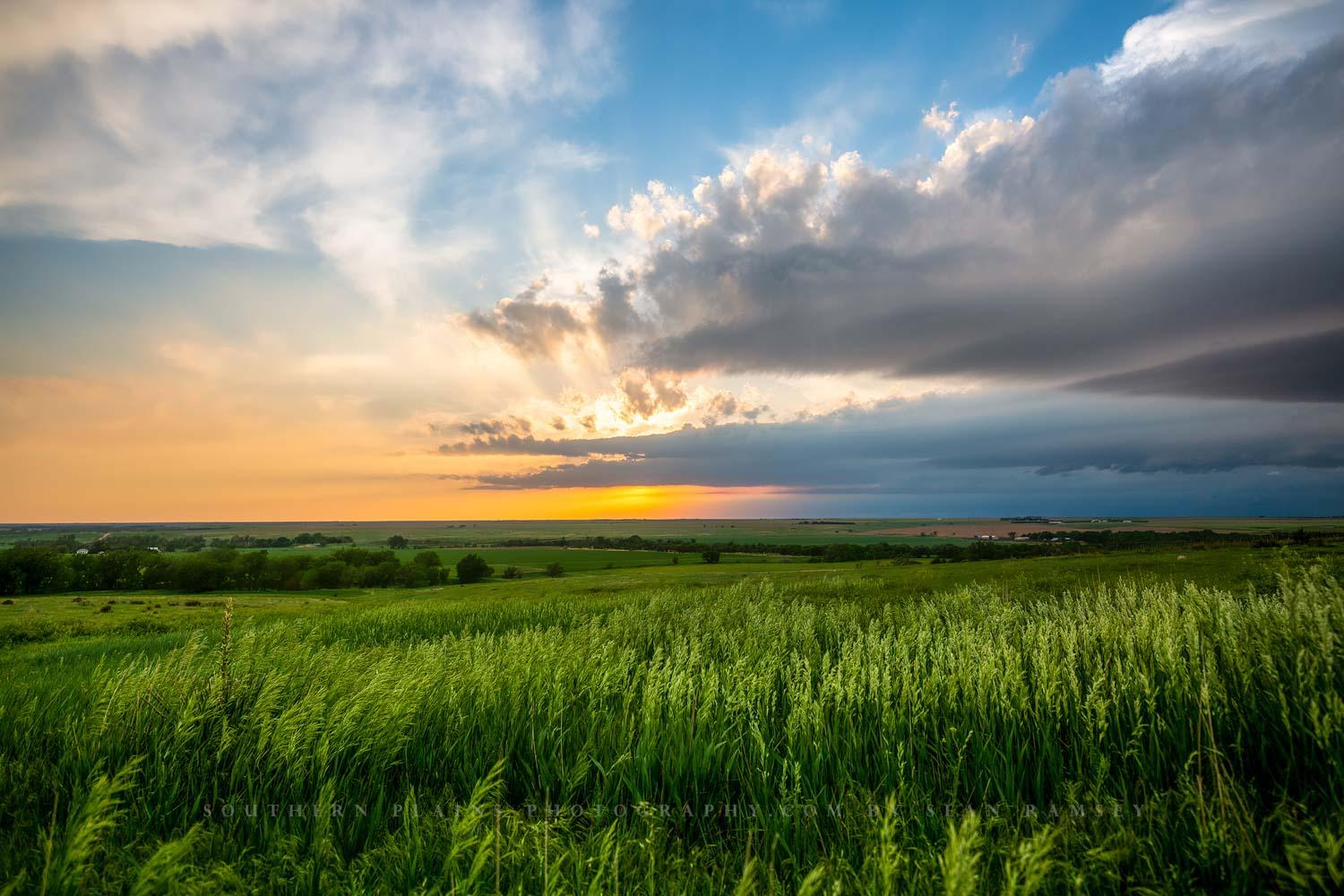
Exploring the Diverse Landscape of Kansas: A Comprehensive Guide
Kansas, often stereotyped as a flat, featureless expanse, is a state of surprising geographic diversity and ecological richness. The landscape of Kansas is a tapestry woven from rolling hills, expansive prairies, rugged canyons, and fertile farmland. This comprehensive guide delves into the multifaceted beauty of the Sunflower State, offering an in-depth exploration of its geological history, distinct regions, unique ecosystems, and the human impact that has shaped its present-day appearance. Whether you’re a seasoned Kansan or a curious traveler, prepare to discover the hidden wonders and appreciate the subtle grandeur of the landscape of Kansas.
Understanding the Geological Foundation of Kansas Landscapes
The landscape of Kansas is a testament to millions of years of geological activity. The state’s bedrock primarily consists of sedimentary rocks, formed from ancient seas that once covered the region. These layers of limestone, shale, and sandstone hold clues to the past, revealing stories of prehistoric marine life and fluctuating climates. The last glacial period, while not directly covering Kansas, significantly influenced its drainage patterns and soil composition. The retreat of the glaciers left behind vast deposits of loess, a fine-grained, wind-blown sediment that contributes to the state’s fertile soils, particularly in the northeast. Understanding these geological processes is crucial to appreciating the diverse landscape of Kansas.
The Impact of Erosion and Weathering
Erosion and weathering have played a pivotal role in shaping the landscape of Kansas. Wind and water have carved out canyons, sculpted mesas, and gradually worn down the once-towering mountains that existed millions of years ago. The Kansas River and its tributaries have been particularly instrumental in shaping the eastern part of the state, while the Arkansas River has sculpted the south-central region. The constant interplay between erosion and deposition continues to mold the landscape of Kansas, creating a dynamic and ever-changing environment.
Exploring the Distinct Regions of Kansas
The landscape of Kansas can be broadly divided into several distinct regions, each with its own unique characteristics and geological features. These regions showcase the remarkable diversity of the state, from the rolling hills of the Flint Hills to the flat plains of the High Plains.
The Flint Hills: A Prairieland Icon
The Flint Hills region, stretching across east-central Kansas, is one of the last remaining expanses of tallgrass prairie in North America. This area is characterized by its rolling hills, rocky outcrops, and abundant wildflowers. The underlying flint rock, resistant to erosion, has helped preserve the native prairie ecosystem, making it a haven for diverse plant and animal life. Ranching is a prominent land use in the Flint Hills, with cattle grazing on the native grasses, maintaining the health and biodiversity of the prairie. The tallgrass prairie is a cornerstone of the landscape of Kansas.
The High Plains: A Sea of Grass
The High Plains region, located in western Kansas, is a vast, flat expanse characterized by its semi-arid climate and agricultural productivity. This area is part of the larger Great Plains, stretching from Canada to Texas. The High Plains are heavily reliant on the Ogallala Aquifer, a vast underground reservoir that provides water for irrigation. However, the aquifer is being depleted at an unsustainable rate, raising concerns about the long-term viability of agriculture in the region. Center-pivot irrigation systems are a common sight in the High Plains, transforming the landscape of Kansas into a patchwork of green circles.
The Red Hills: A Colorful Canyonland
The Red Hills region, located in south-central Kansas, is characterized by its colorful canyons, mesas, and buttes. The red coloration of the soil and rock is due to the presence of iron oxide. This area is significantly more rugged than other parts of the state, with deep canyons carved by erosion. The Red Hills are home to a variety of unique plant and animal life, adapted to the arid conditions. Gypsum formations are also common in this region, adding to its geological interest. The Red Hills offer a stark contrast to the more typical imagery of the landscape of Kansas.
The Smoky Hills: A Land of Unique Rock Formations
The Smoky Hills region, located in north-central Kansas, is known for its unique rock formations, including hoodoos, arches, and balanced rocks. These formations are the result of millions of years of erosion, sculpting the soft sandstone bedrock. The region is also home to numerous fossils, providing evidence of prehistoric life. Agriculture is also prevalent in the Smoky Hills, with wheat and other crops grown in the fertile valleys. The Smoky Hills offer a fascinating glimpse into the geological history of the landscape of Kansas.
The Role of Agriculture in Shaping the Kansas Landscape
Agriculture has profoundly shaped the landscape of Kansas, transforming vast expanses of prairie into productive farmland. Wheat is the state’s primary crop, earning Kansas the nickname “Wheat State.” Corn, soybeans, and sorghum are also important crops. The agricultural landscape of Kansas is characterized by large fields, grain elevators, and farmsteads. Irrigation is essential in many parts of the state, particularly in the High Plains, where water is drawn from the Ogallala Aquifer. While agriculture provides economic benefits, it also has environmental impacts, including soil erosion, water pollution, and habitat loss. Sustainable farming practices are becoming increasingly important to ensure the long-term health of the landscape of Kansas.
The Impact of Irrigation
Irrigation has dramatically altered the landscape of Kansas, particularly in the western part of the state. Center-pivot irrigation systems have transformed arid grasslands into productive farmland, enabling the cultivation of crops like corn and soybeans. However, the reliance on irrigation has led to the depletion of the Ogallala Aquifer, a critical water resource for the region. As the aquifer declines, farmers are facing increasing challenges to maintain their livelihoods. Water conservation measures and alternative farming practices are essential to ensure the sustainable use of water resources and preserve the landscape of Kansas.
The Importance of Conservation and Preservation
The landscape of Kansas faces numerous challenges, including habitat loss, water pollution, and climate change. Conservation and preservation efforts are essential to protect the state’s natural resources and maintain its biodiversity. Organizations like the Nature Conservancy and the Kansas Land Trust are working to protect critical habitats and promote sustainable land management practices. Preserving the landscape of Kansas is crucial for future generations.
Protecting the Tallgrass Prairie
The tallgrass prairie is one of the most endangered ecosystems in North America. The Flint Hills region represents one of the last remaining strongholds of this unique habitat. Conservation efforts are focused on protecting the native grasses and wildflowers, controlling invasive species, and promoting sustainable grazing practices. Preserving the tallgrass prairie is essential for maintaining biodiversity and protecting the landscape of Kansas.
Landscape Photography in Kansas
The landscape of Kansas provides endless opportunities for photographers. From the sweeping vistas of the Flint Hills to the colorful canyons of the Red Hills, there is always something to capture. The changing seasons offer unique perspectives, with wildflowers blooming in the spring, golden wheat fields in the summer, and vibrant fall colors in the autumn. The vastness of the landscape of Kansas can be both challenging and rewarding to photograph.
Tips for Capturing the Kansas Landscape
* **Use wide-angle lenses:** To capture the vastness of the landscape.
* **Pay attention to light:** Sunrise and sunset offer the best lighting conditions.
* **Look for interesting foreground elements:** To add depth and perspective.
* **Explore different perspectives:** Get down low or climb to a high vantage point.
* **Be patient:** Wait for the perfect moment to capture the essence of the landscape of Kansas.
Experiencing the Landscape of Kansas: Tourism and Recreation
The landscape of Kansas offers a variety of recreational opportunities, from hiking and camping to fishing and hunting. State parks and wildlife areas provide access to natural areas and offer opportunities to experience the beauty of the state. Tourism is an important part of the Kansas economy, with visitors coming to explore the state’s natural and cultural attractions. Experiencing the landscape of Kansas firsthand is the best way to appreciate its unique beauty.
Popular Destinations for Landscape Lovers
* **Tallgrass Prairie National Preserve:** A unit of the National Park Service, preserving a portion of the tallgrass prairie ecosystem.
* **Flint Hills Discovery Center:** An interpretive center showcasing the history and ecology of the Flint Hills.
* **Monument Rocks:** Unique chalk formations in western Kansas.
* **Little Jerusalem Badlands State Park:** A newly established state park featuring dramatic badlands formations.
* **Kanopolis State Park:** Offers diverse landscapes and recreational opportunities.
The Future of the Landscape of Kansas
The landscape of Kansas is constantly evolving, shaped by natural processes and human activities. Climate change, water scarcity, and land use changes pose significant challenges to the state’s natural resources. Sustainable land management practices, water conservation measures, and renewable energy development are essential to ensure the long-term health and resilience of the landscape of Kansas. By working together, we can protect the beauty and biodiversity of the Sunflower State for future generations.
In conclusion, the landscape of Kansas is far more diverse and captivating than many realize. From the rolling Flint Hills to the expansive High Plains, each region offers a unique perspective on the state’s geological history, ecological richness, and human impact. Understanding and appreciating this diversity is crucial for responsible stewardship and ensuring the preservation of the landscape of Kansas for generations to come. We encourage you to explore the beauty of Kansas firsthand and share your experiences in the comments below. For expert advice on sustainable land management practices, contact our team of specialists today.
Frequently Asked Questions (FAQs) About the Landscape of Kansas
1. What are the main geographical regions of Kansas?
Kansas can be divided into several distinct regions, including the Flint Hills, High Plains, Red Hills, Smoky Hills, and the Osage Cuestas. Each region has unique geological features and ecosystems.
2. What is the significance of the Flint Hills in Kansas?
The Flint Hills represent one of the last remaining expanses of tallgrass prairie in North America. They are crucial for biodiversity and ranching.
3. How has agriculture impacted the landscape of Kansas?
Agriculture has transformed vast expanses of prairie into farmland, particularly for wheat, corn, and soybeans. Irrigation has also dramatically altered the landscape.
4. What is the Ogallala Aquifer, and why is it important to Kansas?
The Ogallala Aquifer is a vast underground reservoir that provides water for irrigation in the High Plains region of Kansas. However, it is being depleted at an unsustainable rate.
5. What are some of the challenges facing the landscape of Kansas?
Challenges include habitat loss, water pollution, climate change, and unsustainable land use practices.
6. What conservation efforts are being undertaken to protect the landscape of Kansas?
Organizations like the Nature Conservancy and the Kansas Land Trust are working to protect critical habitats and promote sustainable land management practices.
7. What are some popular destinations for experiencing the landscape of Kansas?
Popular destinations include Tallgrass Prairie National Preserve, Flint Hills Discovery Center, Monument Rocks, and Kanopolis State Park.
8. What role does erosion play in shaping the landscape of Kansas?
Erosion has carved out canyons, sculpted mesas, and worn down mountains over millions of years, shaping the state’s diverse terrain.
9. How does the climate of Kansas affect its landscape?
The semi-arid climate in western Kansas influences vegetation patterns and the availability of water resources, impacting agricultural practices and natural ecosystems.
10. What can individuals do to help preserve the landscape of Kansas?
Individuals can support conservation organizations, practice sustainable land management, conserve water, and advocate for policies that protect natural resources.

